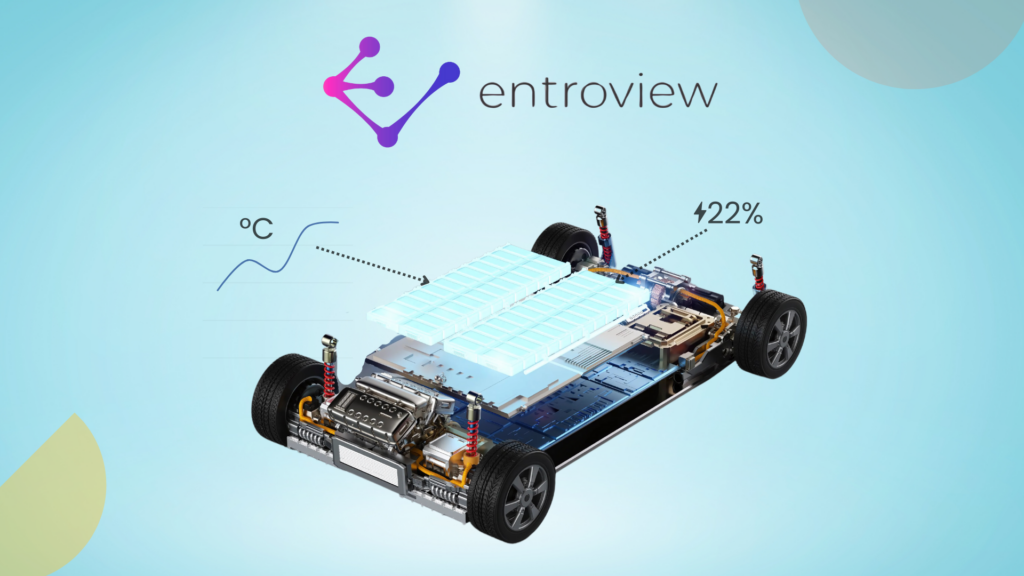Henry Chesbrough, who first introduced the concept of the open innovation model, best described it as:
The purposive inflows and outflows of knowledge to accelerate internal innovation and expand the markets for external use of innovation.
Henry Chesbrough
Product innovations today no longer rely solely on the efforts of internal teams or happen behind closed doors. As the world becomes more interconnected and the market becomes globalized, businesses actively leverage Open Innovation Models to accelerate their R&D processes.
A 2022 Economist report revealed that 95% of organizations had already employed open innovation, and more than half (54%) use it in most or all projects.
Shifting from closed R&D silos, open innovation models also enable companies to democratize innovation for common growth, mitigate risks and tap into a global pool of expertise and resources.
In this guide, we’ll dive into key types of open innovation models and examine how businesses can implement them strategically to foster innovation.
Types of Open Innovation Models
The core of open innovation is value-based collaboration. It enables organizations to foster a culture of continuous improvement and transparency. Circling back to Chesbrough’s definition, open innovation entails an information flow.
Depending on the direction of this knowledge transfer, open innovations are further classified as:
1. Outside-In (Inbound) Models
Outside-in or inbound open innovations occur when a business uses external resources to improve its existing innovation workflows. Companies head-hunt ideas through new technologies, patents, or research.
This acquired information is then deployed to improve internal processes. Because the flow of information is inward, the model is aptly named inbound open innovation.
How to Implement Inbound Models?
- Crowdsourcing
Gather extensive information from a global talent pool and use it across relevant projects. For example,
- OpenAI is crowdsourcing ideas to improve how AI systems reflect our values. Their new ‘Collective Alignment’ team will gather public input to guide AI development.
- Yet2, an open innovation consultancy, collaborated with the United States Department of Energy (DOE) to launch the Wind Turbine Recycling Challenge with a prize fund worth $5.1 million. As a result, the DOE could explore innovative solutions to recycle decommissioned wind turbines.
- Hackathons
In this event, qualified experts collaborate to deliver ground-breaking solutions in a relatively short period, such as 24 to 48 hours.
Iberdrola, a green and renewable energy leader, hosted a hackathon for the energy blockchain community. During this event, start-ups teamed up to brainstorm some of the field’s most pressing problems.
- Innovation Challenges
Also known as corporate challenges, these are limited-time campaigns that enable participants to solve major brand problems.
In 2019, PepsiCo launched the Next Big Idea challenge to:
- Promote team cohesion across the globe
- Increase customer engagement
- Scout top talent for recruitment.
Because of this challenge, PepsiCo launched a new product into the market and increased its brand engagement rate.
According to the 2022 Economist report, larger organizations are adopting open innovation at a greater scale, thus optimizing and capitalizing on these practices more comprehensively than smaller companies.
- Working with Suppliers
Businesses sometimes collaborate with open innovation suppliers to find a fitting innovation partner. This specifically helps find the right partners that align with their organization.
For instance, GreyB is an open innovation supplier that provides a platform for companies to collaborate with potential partners. GreyB helps businesses by scouting for talent, startups, or technology and providing IP strategy expertise. As a result, businesses increase their speed-to-market and streamline innovation workflows.
Pros of Inbound Open Innovation Models
Here’s how inbound models can benefit you:
- Accelerate Innovation
The inbound model fuels innovation by tapping into the collective power of external minds. Companies using this approach access a vast network of ideas, skills, and perspectives. Also, crowdsourcing solutions and engaging in hackathons accelerate problem-solving and reveal new possibilities for groundbreaking products.
LEGO proves the power of crowdsourcing with its LEGO Ideas platform. Fans submit designs, and the community helps turn those ideas into the LEGO sets you buy.
- Accessing Global Resources
They also enable businesses to access a global knowledge base and human resources, breaking down geographical and institutional barriers to innovation. This global reach offers companies an unprecedented ability to solve complex problems by drawing on the diverse skills, insights, and experiences of people worldwide.
For instance, GitHub connects developers worldwide, allowing them to collaborate on projects, share code, and contribute to each other’s work.
- Leverage Customer Feedback
This model can also help receive customer insights to improve product lines. For instance, the My Starbucks’ Idea platform allowed consumers to pitch their ideas and feedback. Starbucks uses this to hone its products and give consumers what they want!
- Explore Untapped Markets
Businesses can partner with other industry giants and explore new market segments and technologies. Like Techstars, a pre-seed investment company that entered the smart transportation market by actively seeking and investing in tech-driven mobility startups.
Some Limitations of the Inbound Open Innovation Models
- IP Leaks
When external organizations collaborate, sensitive trade information is relayed. Hence, businesses deploying this model are prone to IP infringement. Not only can competitors get a peek at your plans, but the difficulty of tracking the source of ideas can lead to costly legal disputes.
- Quality Control
When a business opens up to external inputs, it can sometimes result in an overwhelming volume of data, suggestions, and contributions, not all of which may meet the desired standards or be relevant to the company’s objectives. Sifting through the noise to find truly valuable insights becomes a time-consuming challenge.
- Implementation Challenges
Integrating external ideas smoothly into internal processes can be daunting. Companies may need to reevaluate workflows, communication channels, and organizational culture to maximize crowdsourced or collaborative input.
Ideal Applications of Inbound Open Innovation
Here are the major use cases for applying inbound open innovation:
- Overcoming Technological Hurdles
A lack of infrastructure or tech can delay innovation. This is where inbound open innovation helps.
For instance, when the Medical Research Council (MRC) had trouble creating new compounds for drug development and discovery, it collaborated with AstraZeneca. Consequently, MRC gained access to 22 new compounds and used them to expedite innovative processes.
- Keeping up with Rapidly Evolving Tech Space
Alarmed by the inefficiencies of their existing innovation pipeline, in the early 2000s, Procter and Gamble (P&G) decided to do more than just rely on their internal R&D teams. They pioneered the Connect and Develop (C&D) framework, identifying consumer needs and looking for technology partners to meet them.
These multiple open innovations led P&G to quickly become a trusted household brand with a multifaceted product line.
- Building Niche Expertise
Tapping into uncharted territory is risky for any business unless a niche expert works with it.
For instance, BMW crowdsourced visionary ideas from tech experts to integrate augmented and virtual reality experiences into the transport and mobility sector.
2. Inside-Out (Outbound) Models
The inside-out open innovation model involves sharing a company’s knowledge and IPs. Under this model, businesses generate revenue or leverage technology by sharing their core competencies with the market.
Outbound Open Innovation Model: Strategies to Monetize Patents and Internal Expertise
- Open Source Licenses
These licenses grant broad rights to anyone seeking growth and development.
In the spirit of the open-source movement, Tesla promised not to initiate patent lawsuits and put all its patents on the open market. As a result, any automobile manufacturer could use them for further developments in the electric mobility space.
- Corporate Venture Builder (CVB)
Sometimes, businesses assign a group of in-house experts to explore new markets to launch an entirely new business. These “in-house” startups are used to attract investors or build new businesses.
For instance, ENI Next is a corporate venture capital company that extensively invests in promising corporate ventures in the energy conservation market. ENI enhances the value of innovative startups by financing them through successive stages.
- Spin-off
Such businesses arise when a larger parent company spins off one of its divisions into an entirely new business. Spin-offs inherit the parent company’s resources and IPs while still operating as a separate entity.
Did you know that Google is also a spin-off business? In 2015, Alphabet Inc., an American multinational conglomerate, became the parent company of Google and its former subsidiaries as the organization underwent some major restructuring.
Pros of the Outbound Open Innovation Model
Here are the major benefits:
- Monetize underutilized IPs
A company with multiple patents can leverage this model to commercialize under-utilized patents, licensing them out or finding partners to bring them to market. This generates additional revenue streams from previously dormant assets.
- Cross-industry Collaborations
Cross-industry collaborations and partnerships can generate new lines of business for all involved. For example, Microsoft and BMW joined forces to launch the Open Manufacturing Platform (OMP). It was built to scale automotive manufacturing and further IoT developments.
- Industry Innovations
Knowledge transfers and open-sourcing information enable speedy industry developments. For instance, Meta shares its code, stack, and hardware designs so businesses can use it to build and commercialize new products.
- New Lines of Business (LOBs)
Lending IPs to the open market for a licensing fee can be a great source of additional income. Nokia’s recent patent agreement with Honor further reinforces its strong portfolio and position as a key player in the wireless technology market.
Some Limitations of Outbound Open Innovation
- Dissatisfied Partners
It can be difficult to find appropriate business partners or deals that benefit all involved parties equally.
- Exposed IPs
Cross-industry collaboration involves in-depth knowledge transfers, which make businesses vulnerable to technology or IP leaks.
- Former Product Cannibalization
When a new product is launched, companies risk losing sales of older or existing products.
Outbound Open Innovation Is Best Suited for
- Businesses that have multiple IPs and are looking to monetize it
- Young businesses and start-ups can use this model to pursue alternate revenue lines.
- Businesses that lack tech or manufacturing capabilities can leverage their IPs for infrastructure
3. Coupled Models
Coupled open innovations include elements of both inbound and outbound models. Under this model, businesses leverage their respective strengths to overcome specific shortcomings. Businesses acquire new tech or manufacturing infrastructure and then leverage it with external partners for mutual growth.
- TSMC’s Open Innovation Platform (OIP) is an excellent example of coupled innovation. Here, customers (internal stakeholders) and partners (external stakeholders) share ideas to overcome design barriers and reduce time to market.
- Coupled open innovations also thrive in the pharmaceutical segment, where M&A deals worth $84.2bn were closed in Q4 2023.
For instance, Biofourmis executed a major M&A deal. It acquired a Swiss start-up named Biovotion to enhance its treatments with Biovotion’s digital therapeutic technology.
After the acquisition, Biofourmis leveraged its recently acquired technology and joined forces with a pharma giant, Novartis.
Ways to Implement Coupled Innovation Model
Let’s examine how you can leverage this model:
- Licensing
Licensing is when an organization authorizes an external entity to use its patents for recurring or one-time payment. The company maintains full ownership of its patents.
In the race to create an effective vaccine against COVID-19, BioNTech licensed their mRNA-based influenza vaccines to Pfizer for a whopping $185 million.
As a result, Pfizer rolled out COVID-19 vaccines in less than a year—saving millions of lives globally.
- Spin-Offs
Businesses can also implement the coupled innovation model by allowing external stakeholders to collaborate with internal spin-offs. Siemens spun off its Gas and Power department as an independent company, giving it complete entrepreneurial freedom to collaborate with external shareholders.
Pros of the Coupled Innovation Model
Here are some reasons why this innovation model can help:
- Prompt Innovation
Coupled collaboration enhances an organization’s capabilities as many resources come into play. As a result, R&D processes are accelerated, and innovations are commercialized quickly.
The Apple-Intel partnership shows that collaboration can be a powerful innovation booster. By combining Apple’s design expertise with Intel’s chip technology, MacBooks became faster and better.
- Risk Mitigation
Involved stakeholders share everything–knowledge, risk, and rewards. The collaborative nature of the model allows for diverse perspectives on potential risks, leading to better risk evaluation and preemptive mitigation strategies.
For instance, SpaceX’s partnership with NASA on the Commercial Crew Program showcases effective risk mitigation.
- Better Brand Perception
Collaborating with reputed brands can enhance brand and market position.
For example, Google partnered with four major US-based universities to offer advanced industry specializations. By doing so, Google established itself as a brand that encourages continuous learning while expanding its revenue streams.
- Better Profit Margins
Accessing complementary tech and markets can open up new lines of business and even provide businesses with the first-mover advantage.
The Netflix-Comcast collaboration shows how even competitors can find common ground. Netflix gained smoother streaming and potential cost savings, while Comcast likely saw improved customer satisfaction.
Some Drawbacks of the Coupled Innovation Model:
- Conflicts
With so many stakeholders involved, the chances of IP ownership conflicts are high. Disagreements over who contributed what and who deserves what share of potential profits can derail projects entirely.
- Communication Crisis
Cross-industry collaboration often entails cultural and communication gaps that affect communications. Companies might have different jargon, work styles, or expectations, leading to misunderstandings and delays.
- Negotiations
Negotiating with partners who have different goals and visions can be difficult. The inability to define goals clearly can often lead to resentment. One partner might prioritize speed, while another focuses on long-term sustainability, making compromises difficult.
In a 2021 study by the European Union, Organizational asymmetries due to strategic misalignment between partners, differences in culture and mindset, different degrees of IP openness, differences in approaches to contract formality, overall pace of progress, and risk tolerance emerged as the biggest challenge overall, showing to be problematic in over one-third (about 38%) of the case studies.
Suitability of the Coupled Open Innovation Model
It is best suited for businesses that want to:
- Pursue multifaceted, high-risk projects
- Team up with diverse partners
- Enter new markets via synergistic partnerships
Final Note: Striving for Open Innovations
A 2021 survey by PwC indicated that 61% of companies globally are heavily investing in open innovation to drive competitive advantage and technological breakthroughs.
In an era of rapid disruption, embracing open innovation models has become imperative for driving sustainable growth. This guide explored three primary models: inbound (leveraging external knowledge), outbound (monetizing internal innovations), and coupled (synergistic collaboration).
Each model offers unique advantages: accelerated innovation, access to global talent, entry into new markets, and revenue generation from underutilized IP. Yet, challenges like IP leaks, partner conflicts, and quality control issues must be navigated strategically.
Organizations that can judiciously assess their needs and harness the power of open innovation models will be best equipped to future-proof their innovation pipelines and gain a lasting competitive advantage.









